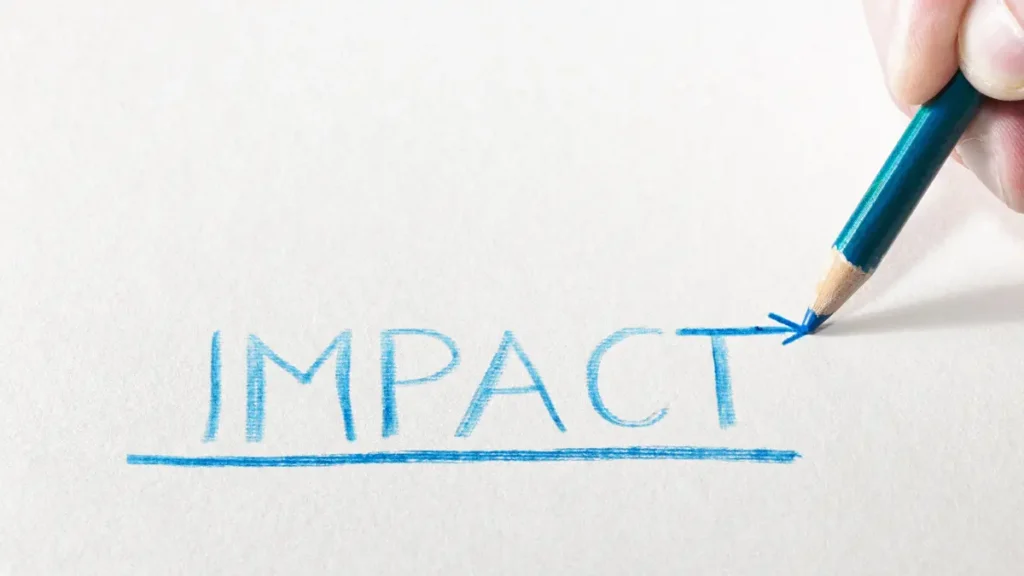Your NGO has just completed a major project. The final report, filled with valuable data, charts, and beneficiary feedback, is submitted to the donor. The project is closed, and that report is filed away on a hard drive, never to be seen again.
Does this sound familiar? For many Nigerian NGOs, this is standard practice. We treat project data as a final obligation rather than what it truly is: a powerful, reusable asset. That “dusty” report is a goldmine of evidence that can—and should—be the secret weapon for your next funding proposal.
In the increasingly competitive funding landscape of 2025, donors are demanding proof, not just promises. Learning how to effectively use your impact data for future grant applications is what separates the struggling NGOs from the sustainably funded ones. This guide will show you how to “upcycle” your M&E results to build an undeniable case for investment.
Beyond Reporting: Thinking of Your Data as an Asset
The first step is a mindset shift. Your data is not just for proving to a past donor that you did what you said you would do. It is for proving to a future donor that you are capable of achieving what you are proposing to do. Every number, every testimonial, and every “lesson learned” is a building block for your next proposal’s credibility.
Four Key Sections of Your Proposal to Supercharge with Data
Here is exactly where and how to strategically insert your past impact data to make your proposal stand out.
1. The Organizational Capacity Section: Prove Your Track Record
This section is where you establish your credibility. Data transforms your claims from generic to concrete.
- Before Data: “Our organization has extensive experience in providing vocational training in Northern Nigeria.”
- After Data: “Over the last three years, our organization has successfully implemented three vocational training projects in Kano and Kaduna, graduating 580 youths in skills such as tailoring and digital marketing. Our 2024 post-program survey showed that 65% of graduates secured employment or started a small business within six months.”
2. The Needs/Problem Statement: Add Localized Urgency
You can use data from your past projects’ baseline surveys to paint a more vivid and localized picture of the problem than national statistics ever could.
- Before Data: “Food insecurity is a major problem in this community.”
- After Data: “While national data shows high food insecurity, our baseline survey for ‘Project Nourish’ in this specific community in 2024 revealed that 7 out of 10 households experience at least one ‘hunger month’ per year, a figure 30% higher than the state average.”
3. The Methodology Section: Justify Your Approach
Why should a funder believe your proposed solution will work? Because you have evidence that it has worked before.
- Before Data: “We will use a community-led sanitation awareness model.”
- After Data: “Our proposed methodology is based on the successful community-led model we deployed in our ‘Project Wash’ initiative. In that project, this approach led to a 75% increase in household hand-washing stations and a documented 40% reduction in childhood diarrheal diseases over 18 months.”
4. The M&E Section: Show You Know How to Measure Success
Including past M&E data shows that you not only have a plan to measure success but that you have a history of doing it effectively. You can even include a small, powerful visual. For those looking to improve their data visuals, excellent resources like the Depict Data Studio blog by Ann K. Emery offer practical tips on creating clear and compelling charts.
From Data-Driven Proposals to Data-Driven Funders
Knowing how to use your impact data for future grant applications is a game-changer. It elevates your proposal from a request to an evidence-based investment opportunity. The next step is finding funders who appreciate and expect this level of rigour. At grantsdatabase.org, we help you connect with these data-savvy funders. Our platform allows you to identify donors whose priorities align with your proven areas of impact, ensuring your powerful, data-rich proposal lands on the right desk.
What About When Things Go Wrong? Using “Failure” Data
Not all data points to success. What if a project didn’t meet its targets? Do you hide it? Absolutely not. Addressing challenges and “lessons learned” in a proposal is a sign of a mature, reflective, and honest organization.
Frame it constructively: “Our 2023 literacy project showed lower-than-expected attendance from girls in the 15-17 age bracket. Our post-project analysis identified household chores as a key barrier. Therefore, in this new proposal, we have integrated a flexible evening class schedule to directly address this lesson learned.”
This kind of transparency builds immense trust with funders.
Conclusion
Your impact data is the most authentic and persuasive voice your organization has. It tells a story of your experience, your effectiveness, and your ability to learn and adapt. Stop thinking of it as a backward-looking report and start seeing it as a forward-looking tool. By weaving your past successes (and lessons) into the fabric of your future proposals, you don’t just ask for a grant—you make a compelling case for a continued partnership in creating change.
